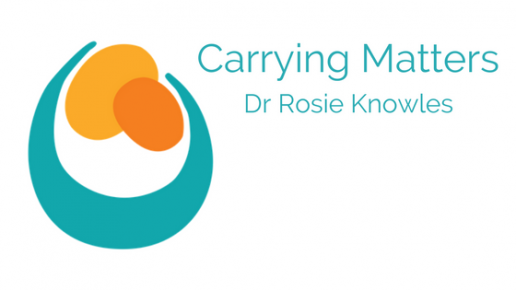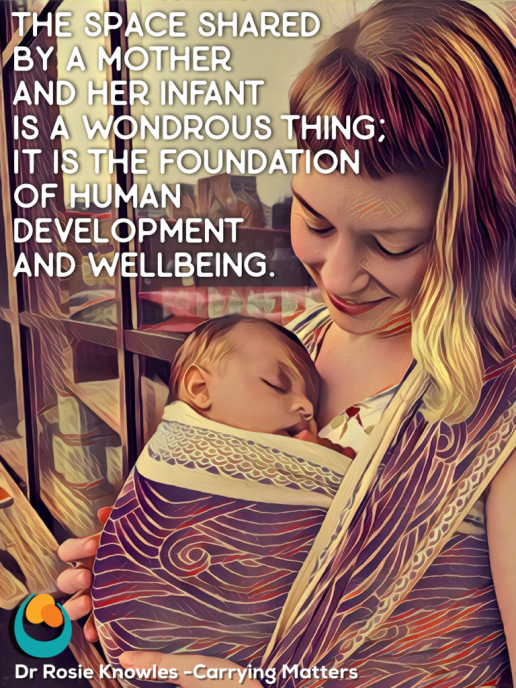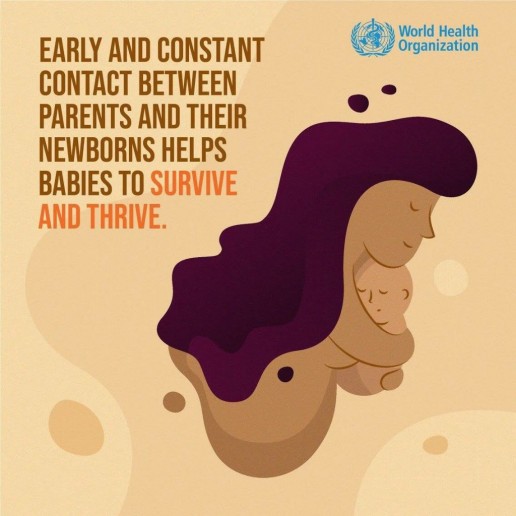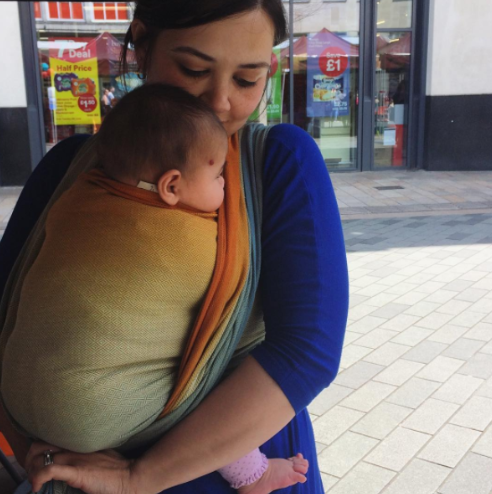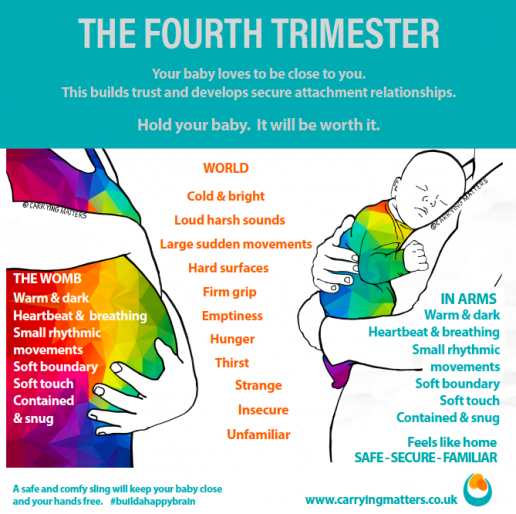The mother-baby dyad is truly the foundation of human health and wellbeing. As Donald Winnicott famously said "there is no such thing as an infant..." a baby cannot meaningfully exist outside a relationship or the environment on which they depend; usually this is their mother's body. Mothers and babies have evolved alongside each other and they belong together.
For infants to thrive, mothers must thrive too; physically, emotionally, mentally. Too often all the focus is only on the needs of the newborn (which are of vital importance), but don’t forget, when a baby is born, so is a mother.
Maternal mental health matters.
Mothers are the foundation of society; it is they who (usually) do the bulk of the child-rearing, and shape the brains of the next generation. They need support, which should begin in pregnancy and take a significant step up at birth (and not fade away after the first few weeks!)
Did you know that suicide is the leading cause of death in the first year after birth? This is a tragic statistic.
Close contact is therapeutic.
Oxytocin, the hormone of love and bonding, is released during labour and birth, and is an essential part of breastfeeding.
However, it is also released through close contact, soft touch, the sight, scent and feel of someone you love. Oxytocin has an effect on the stress response via the hypothalamic-pituitary axis. It reduces the effects of cortisol (the stress hormone), reducing anxiety and providing a calming effect. This is why hugs and stroking from someone you trust are often so good when you feel bad.
Many hospitals encourage early skin-to-skin contact as an essential part of mother and baby wellbeing, based on well-established research.
Oxytocin is a key part of building a baby’s secure attachment relationship to their mother, and also, for mothers to bond to their babies. This is why we encourage plenty of holding and time in close contact, engaging in responsive parenting.
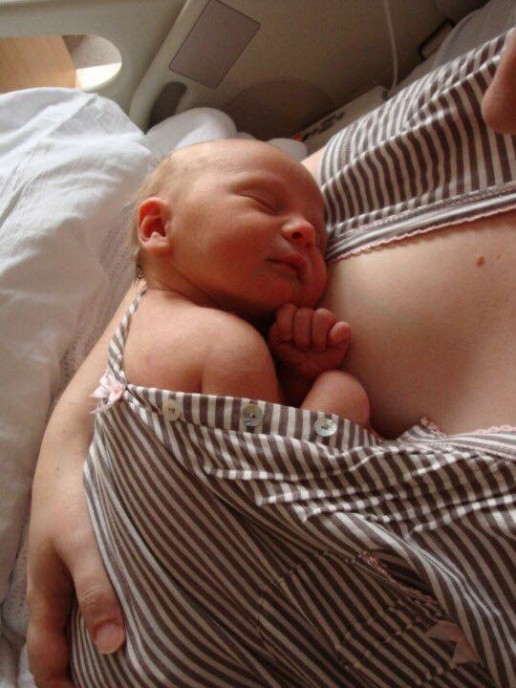
“Attachment to a baby is a long-term process, not a single, magical moment. The opportunity for bonding at birth may be compared to falling in love – staying in love takes longer and demands more work.” T. Berry Brazelton
There is a bit of a myth, peddled by glossy parenting magazines and films and internet memes, that you will fall in love with your baby at first sight; an instant sunburst of the most intense and wonderful love of all the moment baby arrives, and it will be an absolutely transformative experience.
“The day I became a mother was the most magical day of my life.”
“I never knew what love was till my baby arrived.”
So many families are taken aback when they don’t experience this. Women can often feel guilty about this; if pregnancy, labour and birth haven’t gone how we hoped, if we feel lonely and isolated at home rather than surrounded by support, if it all just feels damn hard. So we then feel like there is something wrong…. and that leads on and on, towards feelings of failure or inadequacy.
Sometimes, yes, there is that wonderful experience, when new parents have been well supported all the way through pregnancy, and had the chance of a holistic labour and birth. (And by holistic, I mean where all the needs and wishes and safety of the whole family are taken into account wherever and however baby arrives).
But too often, it isn’t like that, however well prepared everyone is. It is important to acknowledge that this is the reality for many. “Speaking this secret” may feel terrifying; but you will find so many other mothers around you feel the same.
Healing begins when we feel heard.
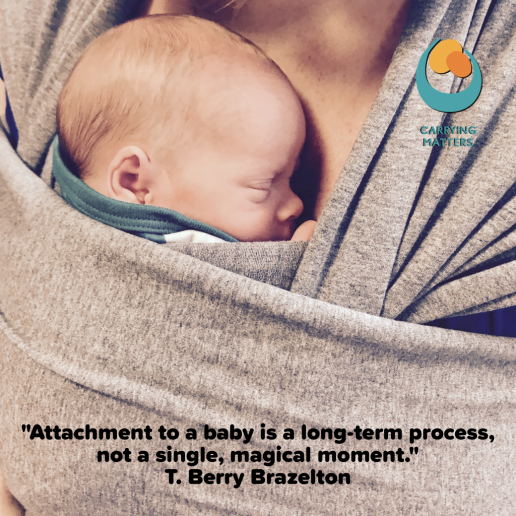
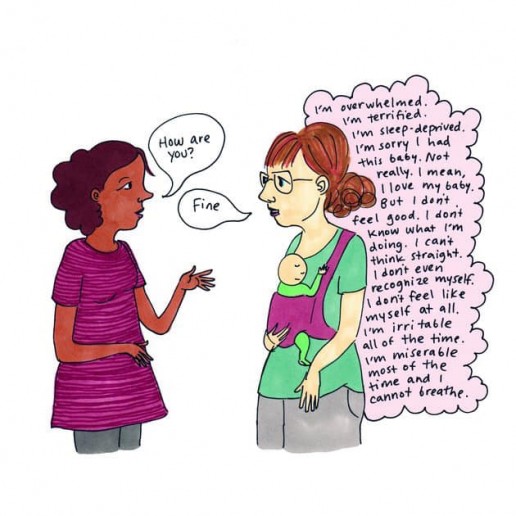
The good news is that biochemistry isn’t an act of willpower or skill; hormone release happens without conscious control.
Love can, and will grow, with time spent together, and close contact.
Building secure attachments takes time and is a two-way process. A parent’s brain changes when their baby is born: they need to learn how to love this tiny, needy human being. Babies don’t yet have the skills to communicate and have so many needs, that everything can feel like guesswork. When you are used to making decisions and being in control of your own life, this sudden unpredictability can be a big challenge, the responsibility is scary and daunting. Everything hurts. Nobody is getting enough sleep. And then unrealistic family and societal expectation is piled on top.
It is easy to feel like things are falling apart, and it’s not the magical sun-kissed perfect Insta-experience you had expected. We don’t live in the communities we once did, everything seems harder even with all our technology.
Be encouraged, though.
Love grows quietly in the hidden places inside us, in the chemical soup, in the firing neurons.
Love catches you unawares, in the curve of a lash on a damp cheek. Love reassures you after a hard day of crying as baby finally falls asleep in your arms. Love beams out at you as your baby’s smiling gaze locks on your own. Love grows: and all the hard work then feels worth it.
The more contact there is, the more oxytocin there is, the stronger the bond grows. It becomes an endlessly repeating cycle of contact, connection, the desire for more contact and more connection. Being together becomes rewarding. When your baby begins to respond and trust you in the fourth trimester “dance” this will encourage a feeling of enjoyment and pleasure; this is dopamine. You begin to find reward and delight in your child and your growing relationship.
This is why close contact, first with skin to skin and then with a lot of holding and responsive engagement matters so much for the mother-baby dyad. It is the biological norm for how they grow into life together. Babies are designed to be held constantly, it is often the only place they will settle, as it feels safe, secure and familiar. Mothers are designed to meet their infant’s needs; together they make a “sacred space”. Holding your baby as much as you can and as much as they need will be part of the process.
Let biochemistry do its thing. Ignore those who say “put your baby down”. You belong together. Your instincts to comfort and hold your child have been around far longer than books and the internet.
Too often, society and its demands can interrupt this growing bond.
The expectations of “getting your body back”, and the comments, “put that baby down!” “you’re going to spoil that baby!” “are you still feeding that baby?” add to the general anxiety around parenthood. It was never meant to be this hard, and such ideas go against the natural physiology of mothers and babies.
Much of the rise in perinatal mental health disorders comes from the loss of supportive communities, misunderstandings of normal baby behaviour (“your baby should be sleeping through the night by now”) and a focus on adult productivity for “growth of GDP” and early school readiness, etc rather than nurturing new relationships and focusing on creating a healthy society full of happy brains.
If we try and live in conflict with our biology we are going to run into problems.
So be confident and trust in your body and trust in your baby. You were made for each other. You are part of each other’s growth and healing. The hard work of nurturing your child and caring for yourself is an investment well worth it.
What can we do to help? How can we help keep mothers and babies together so they can thrive?
Too often, it is very difficult to meet a baby’s needs to be held, when there are so many other demands on time and so many expectations around us. Babies can feel heavy as our bodies are often not used to lifting growing loads.
Babywearing can be one way of helping.
- It keeps a baby close, resting on their mother’s body comfortably, but allowing her to be hands-free.
- It spreads baby’s weight around, making them feel lighter and easier to carry.
- It encourages the close contact for both halves of the dyad, building bonds and reducing stress and anxiety.
- It helps babies to sleep (and yes they will learn to sleep in a bed too!)
- It often helps to reduce crying, due to the cuddle and the rocking motions, babies feel safe and secure and will calm down when taken for a walk. This can bring some relief to a very tired parent.
- It can help reduce the symptoms of reflux and wind and tummy discomfort, reducing crying and thus easing parental distress.
- Feeling able to calm and reassure her baby with a simple tool can help improve confidence and feelings of coping.
- Knowing her baby is safe and with her can help considerably with anxiety.
- It can be a great way to feed on the go; promoting baby-led parenting without trapping mothers on the sofa or at home.
- It can become a very therapeutic tool for a mother; to be able to carry her baby with her wherever she goes, doing whatever she needs to for her own health and wellbeing (eg walks, visiting friends, getting on the bus, cooking).
- Learning a new skill can help her brain feel active and engaged.
- Caring for sick or disabled children can be easier with a good baby carrier.
- Newborns can be kept safe and out of the way of toddlers or well-meaning family members who all want to hold the baby.
The sling itself doesn’t matter that much, as long as it is safe and comfy, and fits you and your baby well. Neither of you should be uncomfortable with it.
However, we know that many, many women find that wrapping with soft cloths in particular can give people a feeling of being “held together” and is very special.
People often describe wrapping as “magic!”
The act of wrapping and binding is in itself therapeutic; the feeling of the cloth massaging your back can help ease tired, stiff muscles and help relaxation, as if you were being hugged and cuddled yourself, reassuring and familiar. Babies often respond to the snugness of the cloth enveloping them, much as they were once enveloped and contained in utero, and will commonly relax and fall asleep with the sensation. The relief can be palpable, and then of course, the dopamine kicks in!
It is worth being aware that for some women, the sensory input of all this close contact can be overwhelming, especially if they are also breastfeeding. This is where early back carrying (with support from a trained professional) can be enormously useful.
People often become very attached to their wraps, as they become imbued with memories of the early months and years of their child’s life. The combination of biochemistry and a simple piece of cloth link us to other mothers all around the world and across generations; a timeless practice to help the mother-baby dyad to thrive.
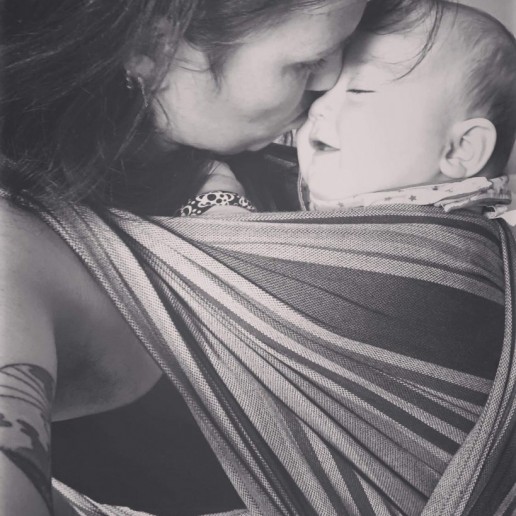
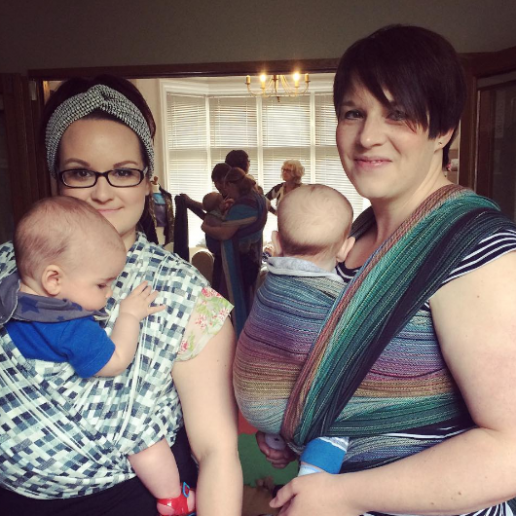
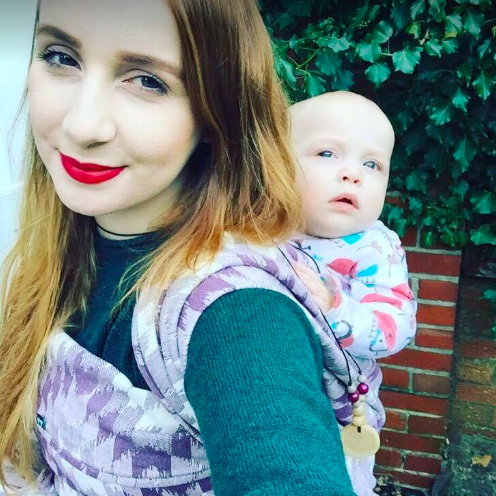
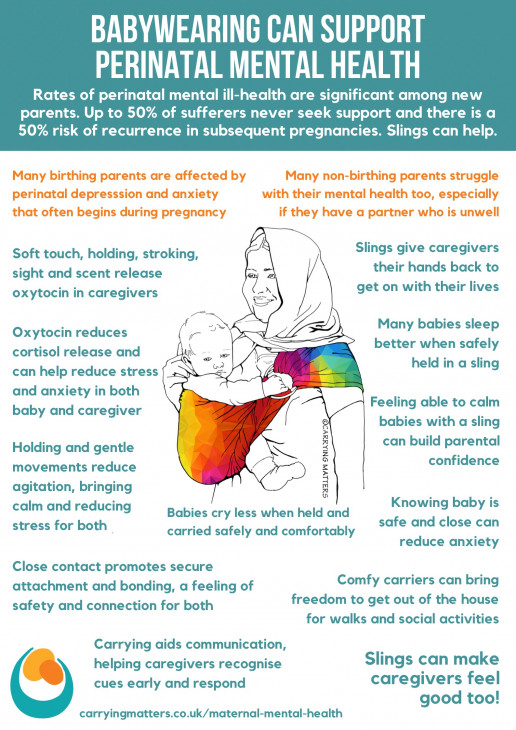
What about fathers and other caregivers?
Yes, they matter too! Read more about why babywearing dads rock here.
Does the idea of babywearing appeals to you and you’d like to find out more?
Your local sling library can be found here. I highly recommend seeking their input and trying a few out, as a close and well fitting sling that works for your body and your baby can make a huge difference to your life. Slings that don’t fit or aren’t well designed just don’t have the same effects or benefits.
What other help do you need?
If you are struggling, do go and talk to your GP, HV, midwife, the local perinatal mental health teams, the many charities set up to support women who are experiencing mental health challenges, your family, your friends. Get some support so you can get enough rest, if you can. Try to eat well. Try to get out of the house. Try to spend time with the kind of people who “get” you (not everyone finds bright noisy baby groups helpful). Use online resources. Take a break, put your baby down if you need a rest (a few minutes of crying won’t lead to any lasting problems and may give you a breather.) Talk to people. You can do this.

